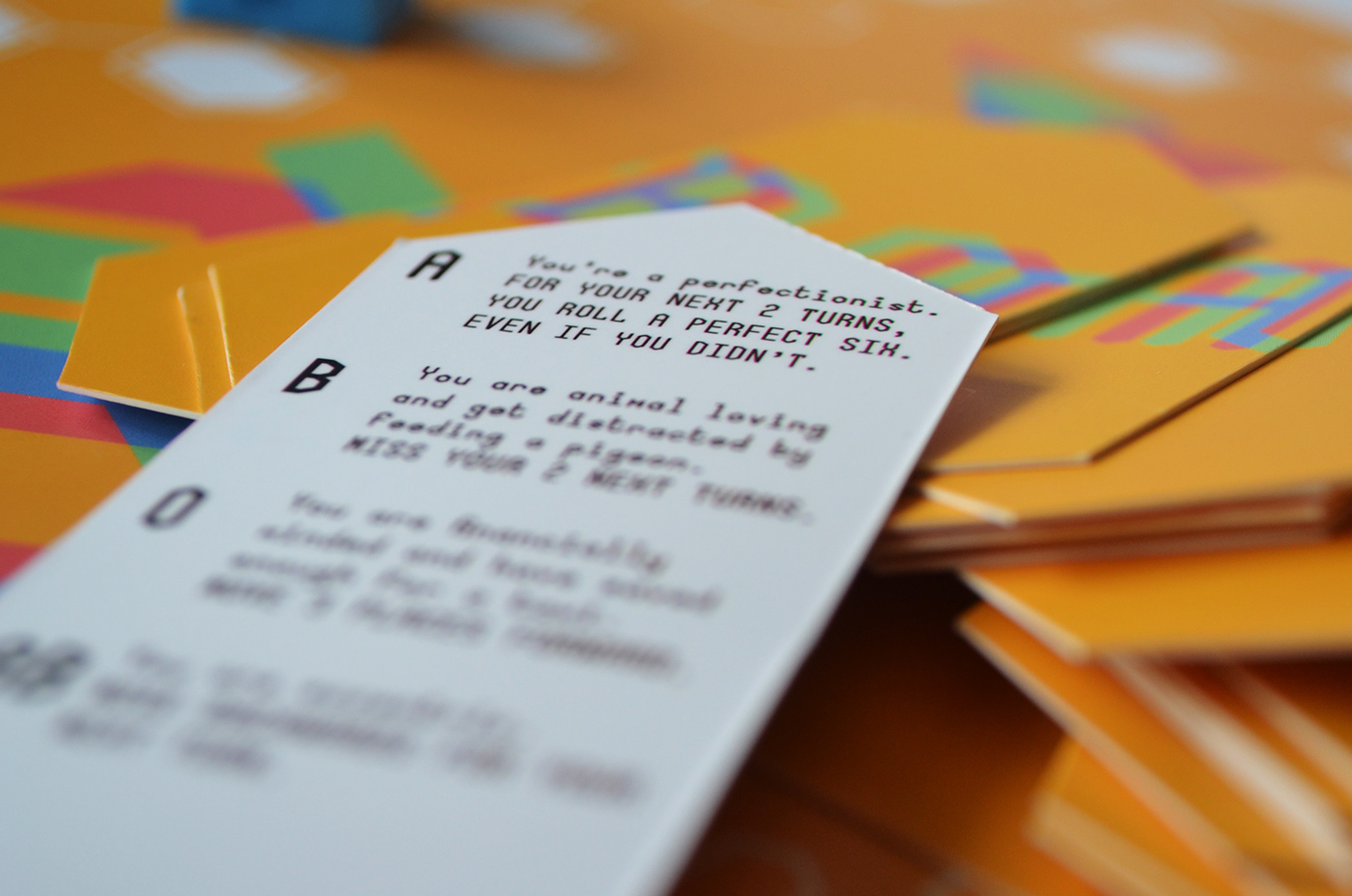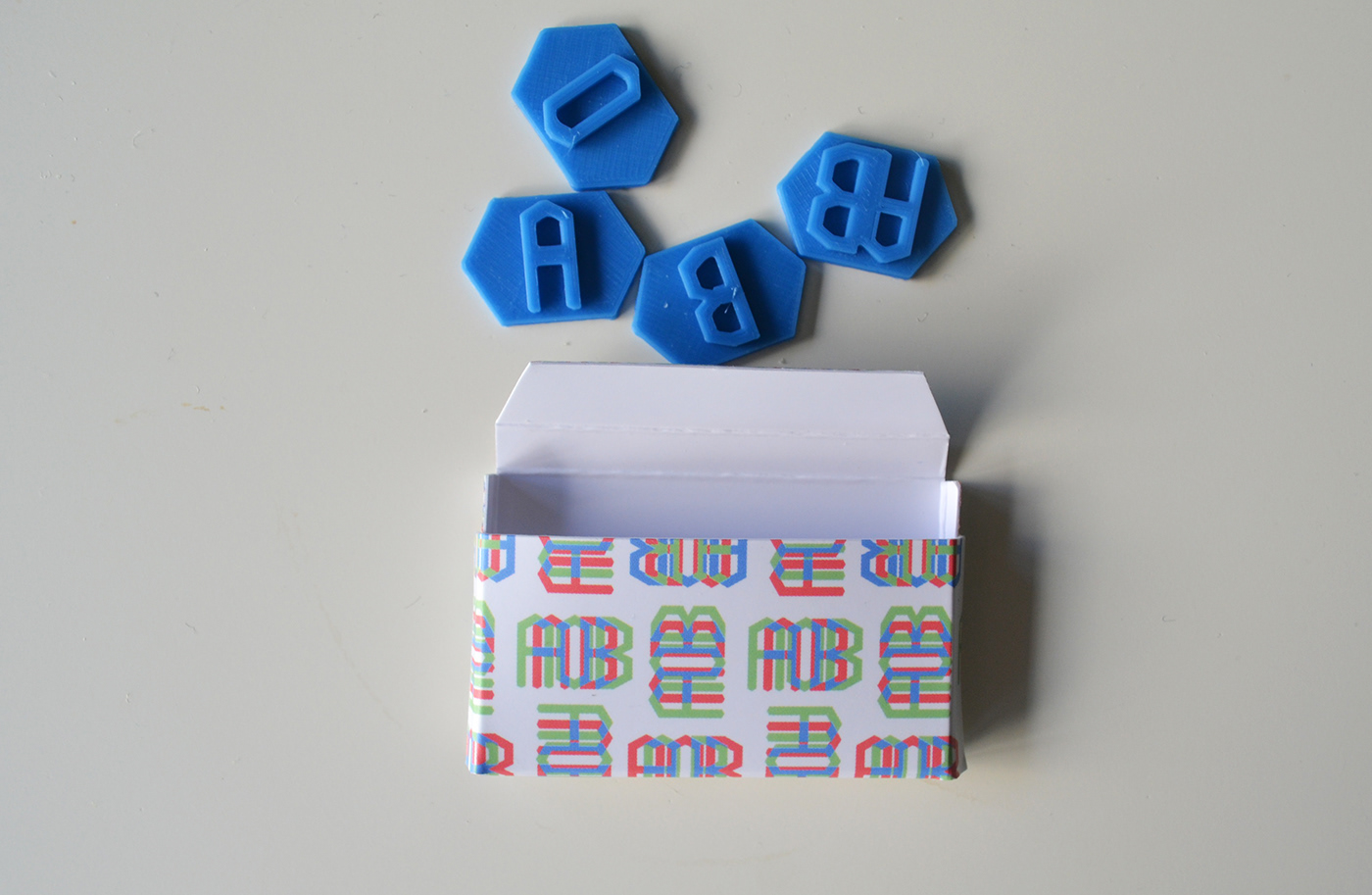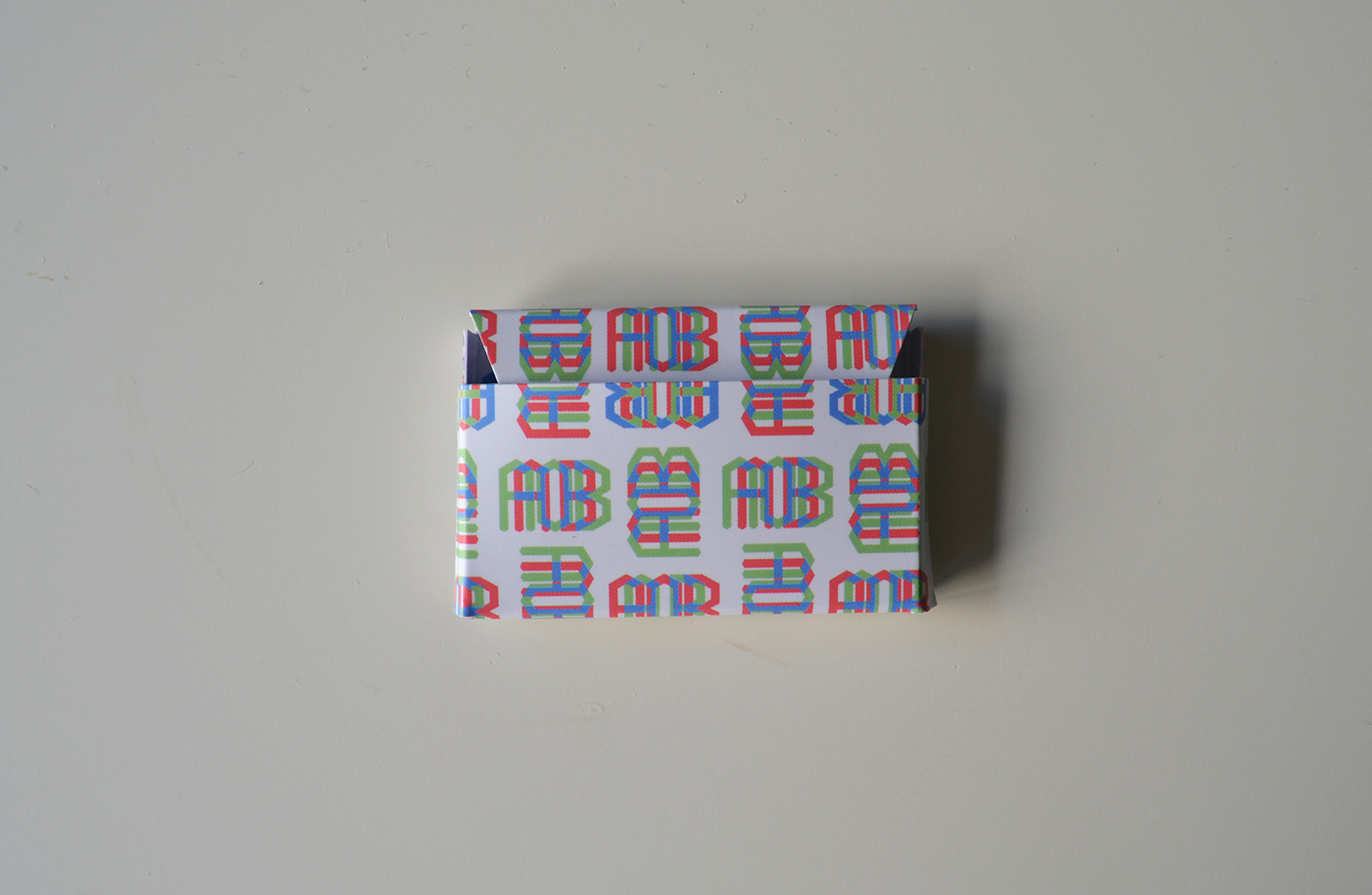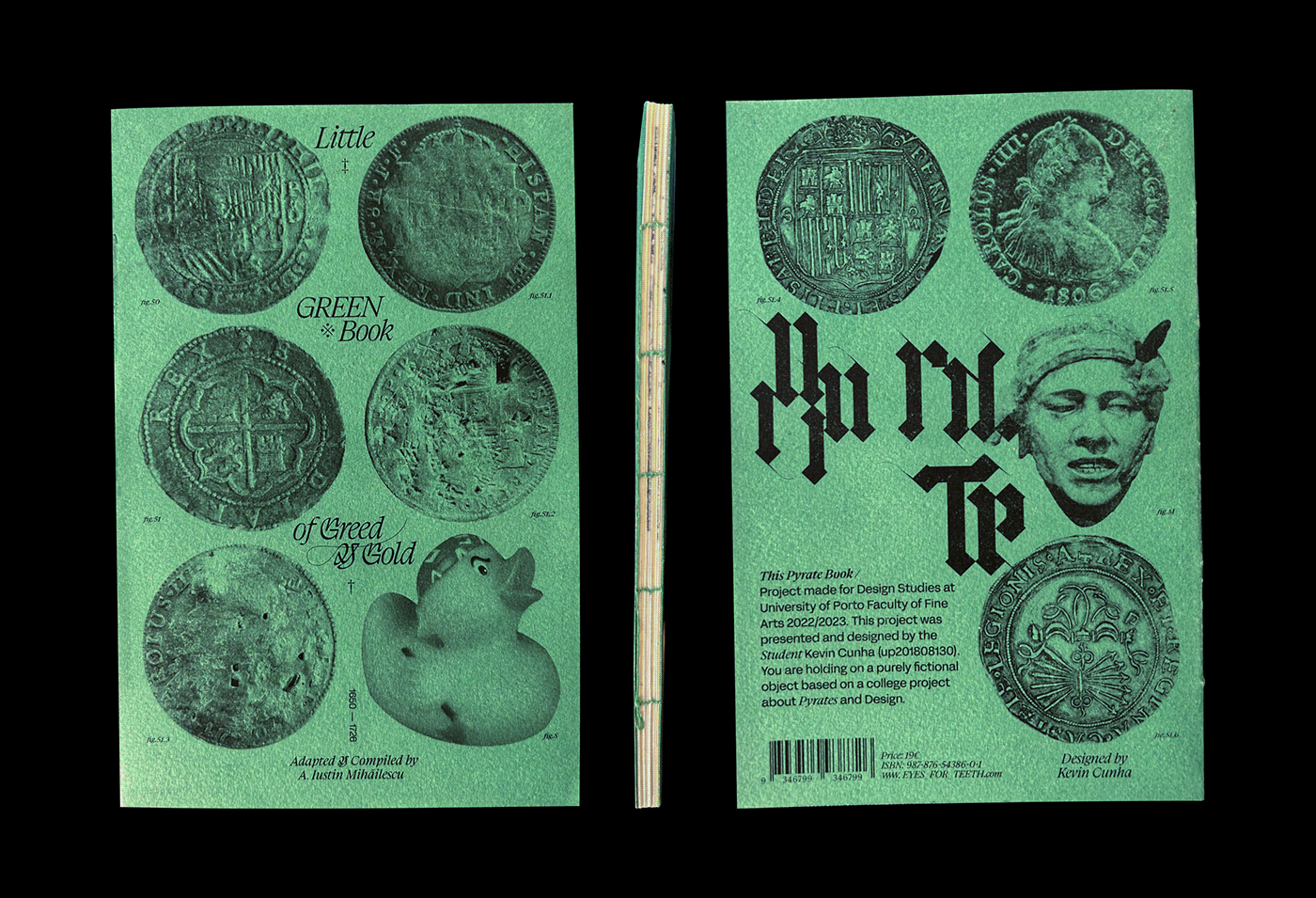TYPECAST
Boardgame

In parts of South East Asia — particularly Japan and South Korea — a concept has become popular in recent decades, linking blood type to personality. While this seems harmless, a concept known as ‘bura-hara’ has arisen in recent years, literally blood discrimination. Using this as a lens, I set out to explore blood discrimination around the world. I set myself a task to create an experiential piece of design, that would allow users to feel some of what discrimination based on your blood is like.
A boardgame.
A boardgame.

I wanted the game to be easy to pick up so a simple snakes-and-ladders type would work well. Each player would take a turn rolling a dice, with the aim to get their playing piece from one side of the board to the other. If they landed on marked squares, they would take a card, which would give them a rule based on their blood type. Some of the rules could have a positive personality attribute — and move them forward — while others would have negative ones that moved them backwards. I decided to make the negative cards harsher than the positive cards were kind, in order to frustrate the players further.
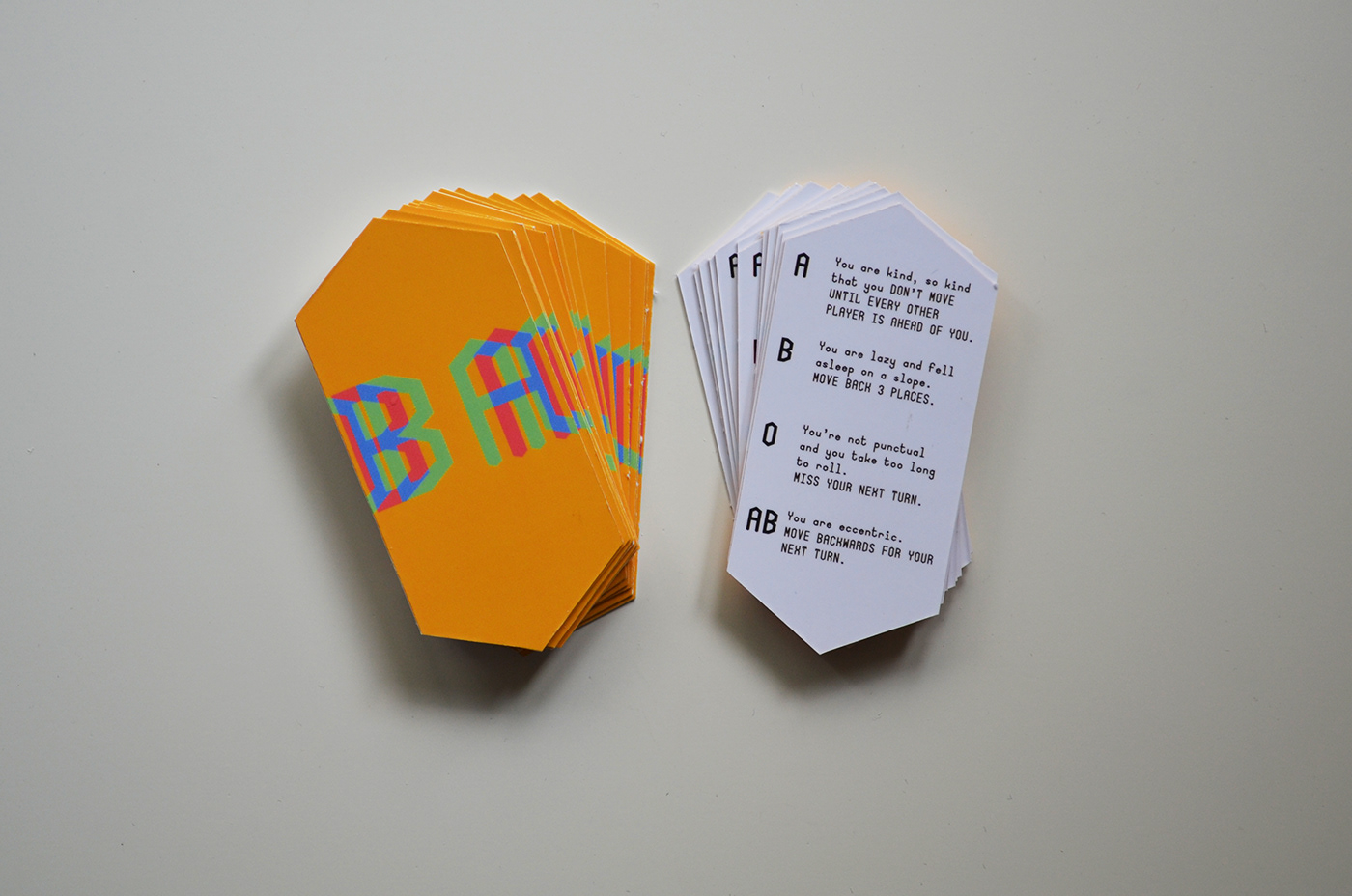



Since blood groups are categorised by letters, I came to the conclusion that type would play a large role in the visuals of the game. I also wanted to include a reference to the reality of blood and researched scientific images of blood; microscopic photography, diagrams and medical equipment. I was drawn to the diagrams that biologists use to illustrate the breakdown of blood types. Hexagons are incorporated to label the different elements.



I designed a simple monogram of the letters A, B, AB and O; I wanted the forms to be readable as letters on inspection, while also remaining as ambiguous shapes at first glance, a subtle reminder that we are all individual, yet complex and vague. The colour scheme I chose consisted of four bright colours, each one representing one of the blood types. But I chose those specific colours because they are the colours that human blood can be. Red obviously represents blood itself, while the yellow stands for plasma. The blue is a reference to the colour our blood looks in veins under skin, while green is the colour blood turns for anyone who has Sulfhemoglobinemia, a blood disorder. I didn’t go for the exact shade of plasma yellow or red blood since the true colours would create a sickly effect and, above all, I wanted the game to appear deceivingly friendly and welcoming.
